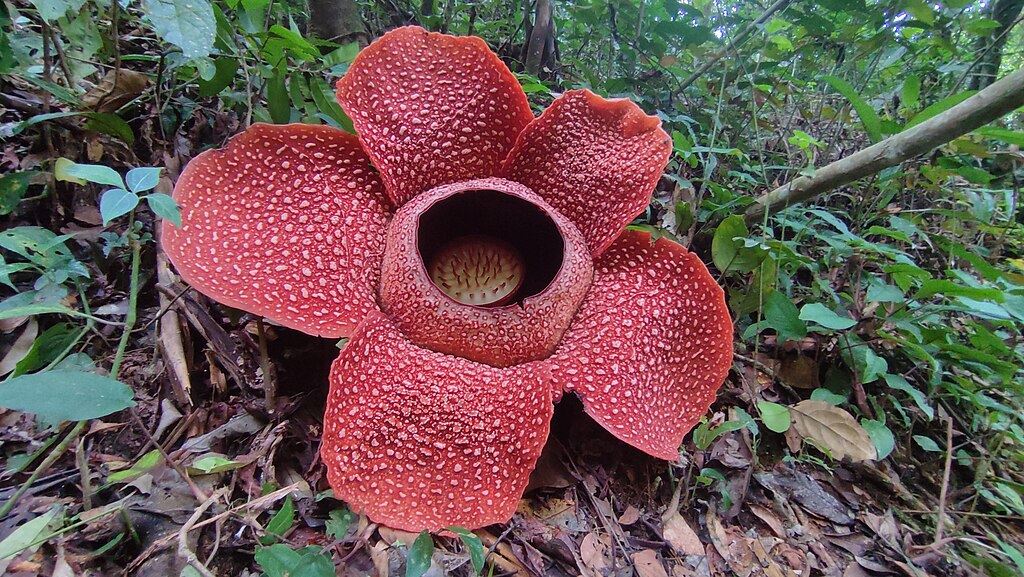
Rafflesia arnoldi is the world’s largest single flowering plant, boasting a bloom that stretches over three feet wide. Known as the “corpse flower” or “stinking corpse lily,” this unique plant emits a putrid odor resembling rotting flesh to attract carrion flies for pollination. Unfortunately, a recent study has revealed that the iconic Rafflesia flower, as well as other species within the Rafflesia genus native to Southeast Asian forests, are facing a severe risk of extinction. While only one out of the 42 Rafflesia species is currently classified as critically endangered by the International Union for Conservation of Nature (IUCN), this study shows that 60% of the species in the genus meet the IUCN criteria for being critically endangered, with all species being categorized as threatened.
Researchers from the University of Oxford Botanic Garden and the University of Philippines Los Bannos conducted the study and found that 25 Rafflesia species are critically endangered, 15 are endangered, and two are vulnerable, as reported by ABC News. These plants are being threatened by habitat destruction and illegal harvesting. Moreover, 67% of the known Rafflesia habitats are located outside of protected areas and have not benefited from conservation strategies. The study emphasizes that Rafflesia populations are already incredibly small, with some species only consisting of a few hundred individual plants. Shockingly, some species may even become extinct before they are discovered, according to Earth.com.
Dr. Chris Thorogood, co-author of the study and deputy director/head of science at the Oxford Botanic Garden and Arboretum, emphasizes the need for a collaborative and cross-regional approach to save these remarkable flowers. He believes that the world’s largest flowers could become a powerful symbol for plant conservation. The study highlights the potential role of local communities, especially indigenous groups, in conservation efforts. These efforts could also benefit ecotourism in Southeast Asia, creating a mutually beneficial relationship for both the flowers and the people living in close proximity to their natural habitats, as noted by Earth.com. (Read more about the fascinating corpse flower.)
Denial of responsibility! Vigour Times is an automatic aggregator of Global media. In each content, the hyperlink to the primary source is specified. All trademarks belong to their rightful owners, and all materials to their authors. For any complaint, please reach us at – [email protected]. We will take necessary action within 24 hours.


